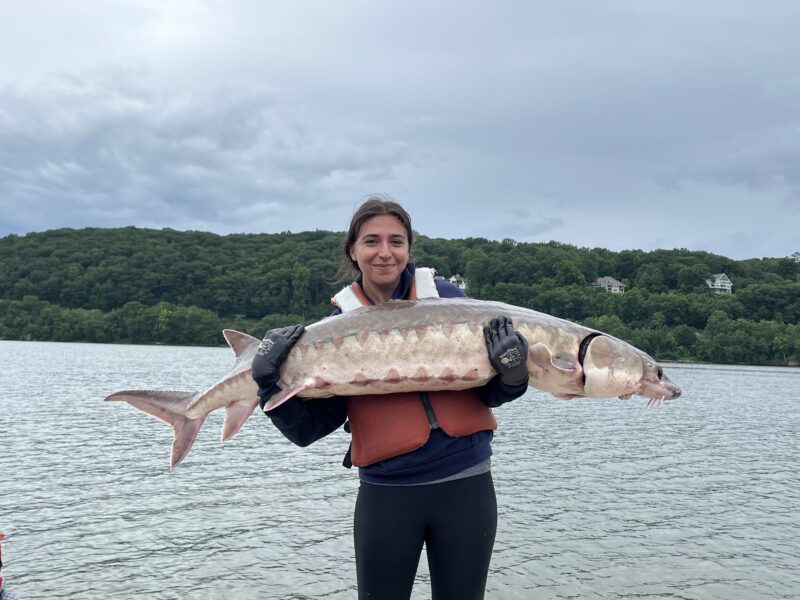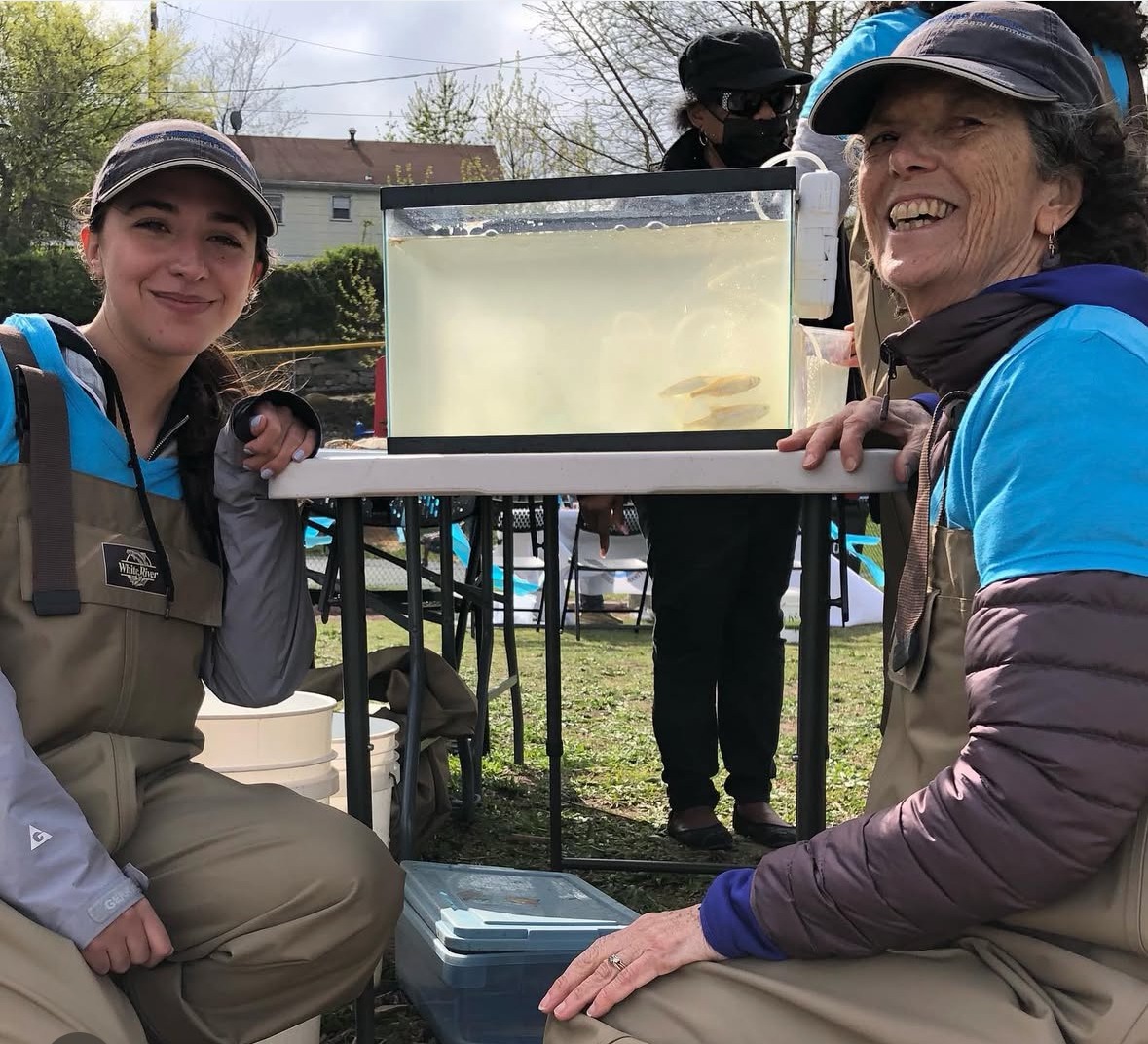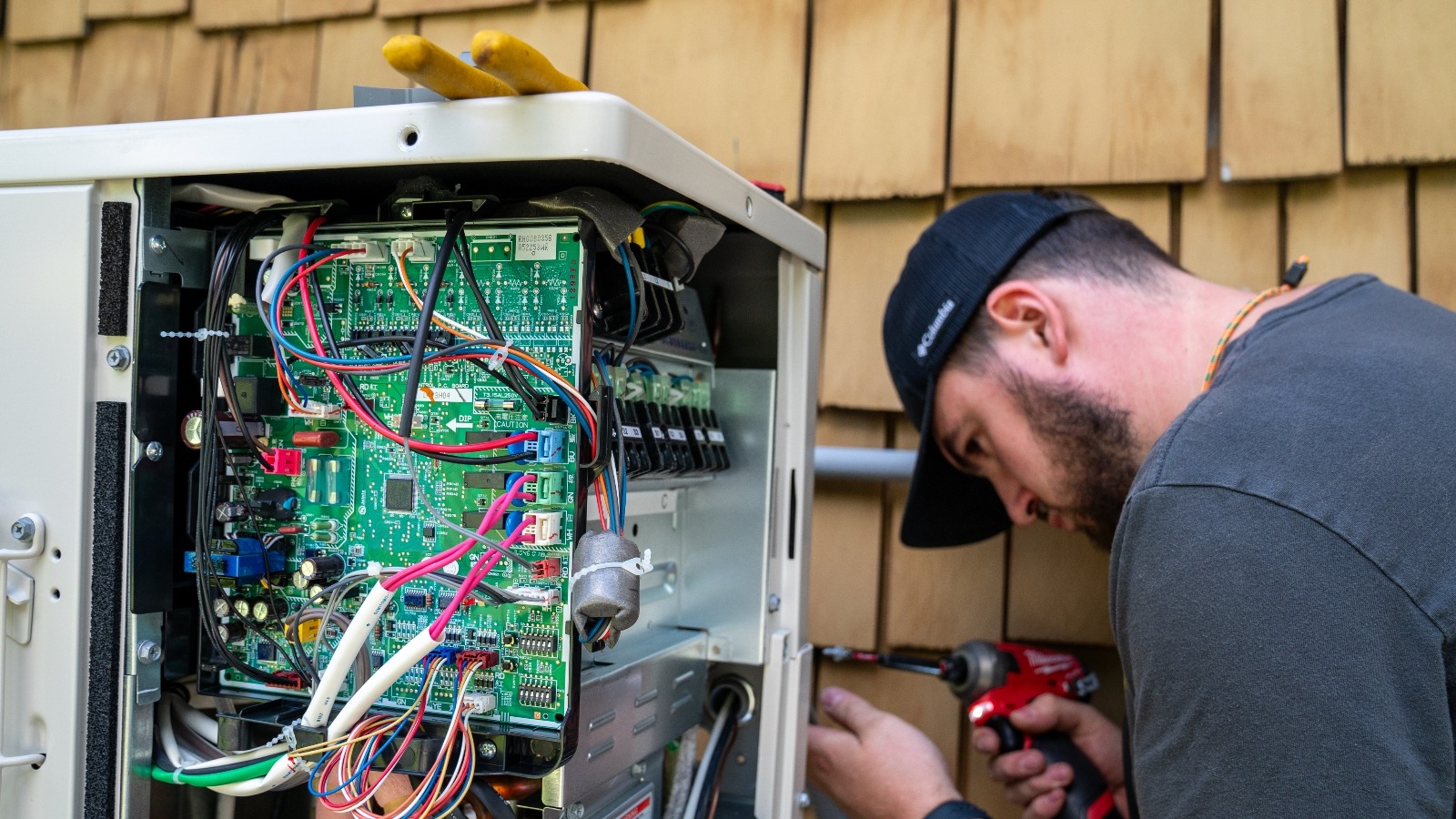The Columbia Climate School is excited to announce the Ripple Effects: Water in a Warming World pre-college virtual workshop for fall 2025.
Water covers over 70 percent of our planet and is essential to life—from sustaining ecosystems and regulating climate to providing the drinking water communities rely on every day. But as climate change accelerates, water systems around the world are under increasing stress. Rising sea levels, shifting precipitation patterns, drought, flooding and contamination are threatening aquatic habitats and water security—posing serious risks to both environmental and public health.
In our interview with the instructors of the pre-college workshop, Margie Turrin, director of educational field programs, and Marisa Annunziato, education and outreach coordinator, at Lamont-Doherty Earth Observatory, which is part of the Columbia Climate School, we explored how climate change is impacting water systems and what can be done in response.
Why is it important to focus on water resources when discussing climate change?
Annunziato: Climate change, in many ways, is a water crisis. Climate impacts become apparent in water first, changing precipitation patterns and intensifying droughts and floods. Water scarcity can exacerbate social and political tensions. Access to clean drinking water is a human rights issue. Agriculture relies heavily on water for crops and food production to keep up with food demands worldwide. Sea levels rise as a result of climate change and threaten coastal areas and island communities, which becomes a human crisis that needs all our attention.
With water covering 71 percent of the Earth, is it really possible that we face water insecurity?
Annunziato: Although water covers approximately 71 percent of Earth’s surface, only about 2.5 percent is freshwater. The vast majority of Earth’s water is contained in the oceans and has too much salt to be suitable for human consumption. Of the roughly 2.5 percent of freshwater on Earth, most of it is not in liquid form but stored in ice sheets and glaciers, such as the Greenland and Antarctic ice sheets. Therefore, despite the abundance of water, only a small amount of it is able to provide drinking water for the billions of people who inhabit the planet. Maintaining clean drinking water for the world’s population is vital, and climate change threatens this access.
What drew you to working in aquatic ecosystems and water resource management?
Annunziato: Ever since I was a child, I was enamored with the ocean and aquatic life. It amazed me that, as you looked out across a lake, river or ocean, the abundant life that lived beneath the surface was often hidden from view. Despite how amazing these ecosystems are, they are being threatened every day by human activity and climate change. I vowed to myself I wanted to dedicate my life to helping to protect and save these ecosystems. This life goal led me to pursue a degree in marine science and inevitably become an environmental educator to educate and encourage the next generation to care for and protect these vital ecosystems we have on Earth.
Turrin: I grew up around water. We lived a block from the ocean for my early life, and I spent time on a lake for many years after that. Water has always been something that drew me in and gave me a sense of being at home. When I was in college, I studied coastal marshes and their ecology. The fragile balance of a coastal tidal system and the marshes around it captured my attention. I wanted to be sure this remained for others. Yet, the beaches in that area were ultimately covered in oil and tar from a seeping oil rig. That mobilized me to work on aquatic habitat protection.

How do you build a bridge between scientific research and high school students?
Annunziato: Increasing access and opportunities for students is important in bridging the gap between scientific research and youth. A great way to get introduced to and contribute to active research is participating in community science programs. These programs allow students to gain valuable experience and skills in collecting data and field work, and this crowd sourcing approach allows scientists to collect more data than they could without the help of motivated individuals. Working with open-source data available online can also introduce students to various ongoing research projects and increase their data literacy skills. Introducing high school students to scientists from various disciplines and fields can expose students to areas of interest and research unknown to them previously, which can inspire them to pursue a degree in that field.
What approaches or activities have you found most effective in helping students understand the complexity of water issues?
Turrin: Student engagement is strongest when they actively explore resources. While we introduce topics with a few slides, most of our courses focus on discussion, small group exploration and “report backs” to clarify complex issues. We often pose questions or quests for students to investigate in breakout groups, encouraging debate and considering multiple perspectives. Unlike traditional science courses, we prioritize student choice, tailoring content to their interests through feedback and relationship-building.
In your view, what role do students play in advancing water conservation and preservation efforts?
Turrin: Students are critical in water conservation and preservation efforts. They are in a place in life where they have significant influence over a wide range of different people. Municipal leaders, community members and nonprofit organizations are all looking for the input of young people. These leaders recognize that young people come in with new ideas and energy, and are willing to put in the time and effort to create change. Consider some of our strong and amazing youth leaders; they have created conversations and actions that adults would have had a much harder time doing.
How can young people best contribute to building a more water-secure and climate-resilient future?
Annunziato: Talk about it! A major roadblock in building a more water-secure and climate-resilient future is the spiral of silence that surrounds these issues. Despite posing major challenges, most people do not consider, think about or talk about climate change in their daily lives. Bringing awareness to the challenges we face and the actions we can take is a huge part in creating change and inspiring others to advocate for a water-secure and climate-resilient future.
Being mindful of water and energy usage can help preserve water and reduce harmful emissions that are propagating climate change today. Taking shorter showers, turning the sink off while brushing your teeth and turning lights off when you leave a room might seem like small changes in your daily life but can have big impacts for creating a brighter future. These individual actions are important, but so much more is possible when we talk, plan and work together.
Our pre-college programs are for high school students in grades 9-12 (and rising 9th grade students) who are interested in extending their learning beyond the classroom and sharpening their knowledge and skills in the areas of climate change and sustainability. All sessions are held virtually via Zoom and recorded, allowing participants the flexibility of tuning in on their own schedule or reviewing past material with ease. At the completion of each workshop, learners earn a certificate of participation.
Participants that attend an info session will receive a 10-percent discount to use during registration. Please sign up for our pre-college mailing list to receive future updates about our offerings. Alternatively, please contact the program team with any questions.
Register today for the Ripple Effects: Water in a Warming World pre-college workshop.
Source link
Guest news.climate.columbia.edu


